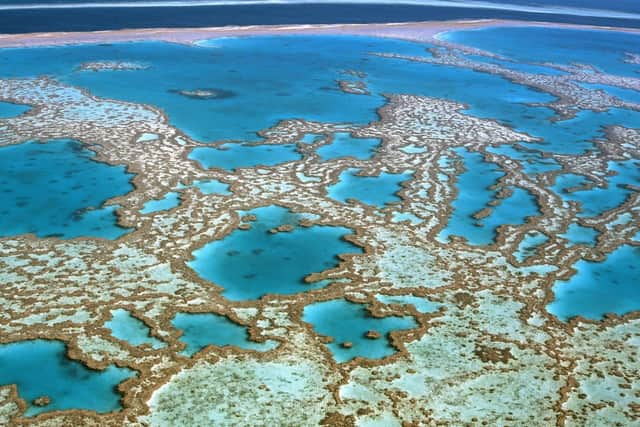What is the 1.5 degrees climate change pledge? What happens if we pass 1.5 degrees of global warming?
The Paris Agreement is an international treaty which saw 196 countries commit to limiting global warming to well below 2, preferably 1.5 degrees Celsius.
Since, countries have pledged an aim to cut greenhouse gas emissions so the planet can become climate neutral by 2050 – with net zero greenhouse gas emissions.
Advertisement
Hide AdAdvertisement
Hide AdBut what does the 1.5 °C target actually mean? Why is it so important? And would would happen if world temperatures rise beyond it?


What is the 1.5 degree climate pledge? Paris Agreement 2015
Since the Industrial Revolution, the world’s average surface temperature has risen by around 1 degree Celsius.
It might sound like a tiny number, but it has had an enormous impact on nature and human life. Glaciers and ice sheets have melted, sea levels have risen, and extreme weather events are on the rise.
The vast majority of scientists agree greenhouse gases, released into the atmosphere by human activity, are the cause of this warming.
And scientists project limiting warming to 1.5 degrees would reduce the worst impacts of climate change.
The Paris Agreement in 2015 adopted at COP21 had a goal of limiting global warming to well below 2 degrees – preferably 1.5 degrees. Countries also agreed to limit their CO2 emissions to ‘net zero’ by 2050.
However, despite this landmark agreement, we are currently on track to a temperature rise of a shocking 2.7 degrees above pre-industrial levels before the end of the century.
What will happen at 1.5 degrees of global warming?
The 1.5°C pledge is crucial to secure a liveable future on Earth, according to the Intergovernmental Panel on Climate Change (IPCC).
Advertisement
Hide AdAdvertisement
Hide Ad“We are at a crossroads,” said IPCC chair Hoesung Lee, “The decisions we make now can secure a liveable future. We have the tools and know-how required to limit warming.”
The IPCC predicts 1.5 degrees of warming will see extreme heatwaves, oceans rising, and the destruction of 70 to 90 per cent of coral reefs.
This is why the 1.5 figure is so important, and why allowing the planet to heat beyond that could be disastrous for nature and humanity.
What will happen at 2 degrees of global warming and beyond?
What is the difference between 1.5 degrees and 2? According to the IPCC:
- At 2 degrees, seas will rise another 10cm on average by 2100 – causing flooding, habitat destruction, and dangerous weather events like hurricanes
- 1.7 billion more people will experience severe heatwaves at least once every five years
- 61 million more people in urban areas will be exposed to severe drought
- Several hundred million more people could become exposed to climate-related risks and poverty
Advertisement
Hide AdAdvertisement
Hide Ad- Coral reefs could decline as much as 99 per cent, sharply decreasing ocean biodiversity and impacting half a billion people
- Animals, plants, and insects will lose more than half their habitats
- Many species will go extinct – almost half the world’s species by 2100
What did world leaders agree at COP26? Are we on track for 1.5 degrees?
As part of the Glasgow Climate Pact at COP26 in 2021, nearly 200 countries agreed to strengthen their emissions-cutting targets for 2030 by the end of 2022.
However, following a push from India and China, the deal was watered down at the last minute. Key wording of escalating the "phase out" of unabated coal was changed to "phase down".
Though it is the first explicit mention of fossil fuels in a UN climate agreement, the Glasgow deal would see a world well above 1.5 degrees warming.
It has been forecast that – even if all Governments meet their 2030 targets – we would have 2.4˚C of warming by 2100. This has led to an outpouring of fury from environmentalists and climate campaigners.
Activists from Greta Thunberg’s Fridays for Future Scotland called COP “infuriating and disappointing” and Conservationist Chris Packham said “the world is going to hell in a handcart”.
Comments
Want to join the conversation? Please or to comment on this article.
